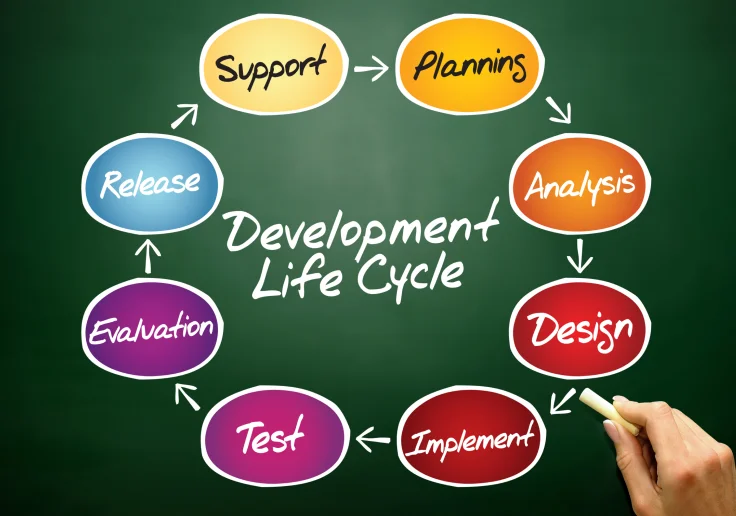Creating the Azure DevOps Pipeline
Content
Sign up to get immediate access to this course plus thousands more you can watch anytime, anywhere. When not focusing on IT, James enjoys music and reading, spending as much time as possible with his wife and two daughters and taking the family dog Lexi to the beach. Step 3 – Configure the Azure pipeline to use your Git Repository or Git Hub . Suppose the code is in Git Hub; fill in your GitHub details.
A stage can be specified to manage jobs in a pipeline and each stage has various jobs. It can be used with any platform like Linux, Windows, and macOS. The Pipeline Scan code examples include variables for your Veracode API credentials. Ensure these variables correctly reference your API ID and key stored in your CI/CD code repository.
Cloud Platform
Here is an example of a Codefresh workflow as it is presented in the graphical user interface. The tree representation shows an overview of the workflow along with its major components/steps and how they communicate with each other. Azure DevOps will now start a new run in your sample pipeline. When you see the list of repositories in your account, select the Pipelines Java sample repo. Inject reusable content into a pipeline—this works like an embed directive in many programming languages.
- Now, after creating your stage and creating the task that will run on your scene, you can add approvers before and after each phase.
- A task can be used to help developers quickly configure a step.
- Execute Powershell script Clear_Workspace.ps1 to clear the designated workspace on the agent.
- Add a new token, give it a new, define the duration it will be valid and define the access scope.
- Test – As the build passes and moves on to the next stage, it enters the crucial testing phase.
- Select the template for IIS Website Deployment as we are going to publish build on IIS server of self-hosted server.
You can explore and customize the pipeline as needed. Follow the steps below to familiarize yourself with the Azure DevOps build and release pipelines. Azure Pipeline is a cloud service that we can use to build and test our code project automatically. The Azure pipeline has a lot of capabilities such as continuous integration and continuous delivery to regularly and consistently test and builds our code and ship to any target.
2 Agent Job Settings
Thus, variables defined at the task level can override variables set at the step level. Variables defined at the stage level override variables set at the pipeline root level. Variables set at the pipeline root level override variables set in the Pipeline Settings UI.

There are a range of options, including hosted Windows containers, hosted Ubuntu or hosted MacOS. Finally, click on the Create Release button right next to the Save button. Select the stage you just created in the previous steps, and https://globalcloudteam.com/ click Create. When the application is created successfully, you will see a pop-up showing up with the App ID and App Secret. You can also find the App ID and App Secret by clicking on the pencil icon next to the application name.
Git stats
Go to task IIS Web App Manage, change the physical path where you want to deploy your build. Fields that are not editable are already set in previous steps. Now, we can deploy a .NET Core application in Azure App Services using the Azure CI/CD process. Let’s see the steps to deploy the same application on a local server. A pipeline can deploy to single or multiple environments. Here, we saw high levels of steps to define pipelines in both ways.

After that, another pop-up window will appear, which allows you to Enter the credentials for the repository. Enter the credentials generated in the previous step here. If you do not have an External Application authentication for Azure DevOps in your UiPath account, you will need to create one. You must be the administrator of the UiPath account to complete this step. Go to the Extensions tab and check whether you have the UiPath Integration extension available.
Azure Pipeline Secrets
Note that you must be the administrator of the organization to complete this step. To do this, click on the Organization Settings link on the bottom left of the organization’s home page. Continuous Integration and Continuous Delivery play a vital role in the cycle of software delivery processes. CI is the modern method employed by software developers to streamline code changes, which facilitates developers to work spontaneously and collaboratively in a more reliable way. Implementing CI helps uncover underlying issues early in the development cycle, which makes them less expensive to fix. Meanwhile, CD is an automatic process comprised of various technical stages, in which software is built, tested, and deployed to one or multiple test and production environments.

So first, you must choose a resource group and the staging slot. Azure Pipeline is an automated set of processes that helps developers to compile, azure devops services build, and deploy codes on other computation platforms. It is a continuous delivery tool similar to open source Jenkins or CodeShip.
# Define release pipeline specific variables / parameters
However, I find that needlessly effortful, as you would have to create the keys twice, which can be error-prone. At the same time, configurational parameters would live, and have to be maintained, in Azure DevOps. I rather prefer them to live in the Azure service.